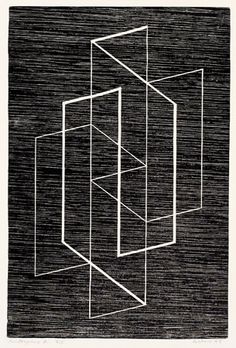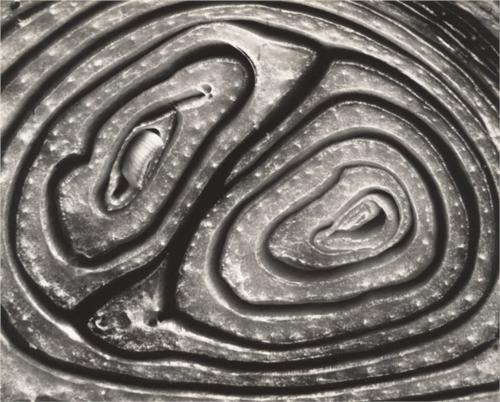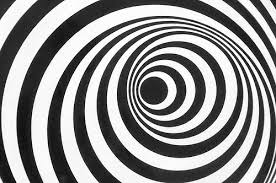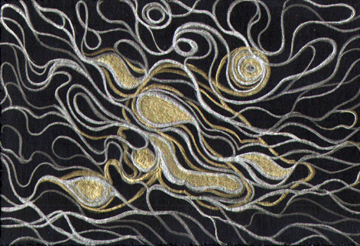Stones along the roadside or lying in a ploughed field; they are really humble objects that often go unnoticed. During an art residency in Noyers, Burgundy, however, I found stones beginning to speak insistently to me. I found it surprising and entrancing. My first discovery was that many of the stones held tiny fossilised shells of many kinds. I was fascinated, as the stones were really heavy, very different from the limestone rocks lying everywhere, rocks which split amazingly flat and thin. Then I began to find limestone thin slabs with the most beautiful patterns on one face, patterns of minute granulations in golds and browns.
My stone collection got heavier and heavier! I retreated to my wonderful studio perch at La Porte Peinte in Noyers, and entered the complex world of these stones as I started to explore them by drawing them in metalpoint.
To my astonishment, their tiny world bewitched me so much that I found myself drawing almost at their command, creating work that was different, almost automatic in what I found myself drawing as I wove the details together. I kept seeing different details that transformed themselves into other images as I studied them, revealing a whole world of personages, mythical animals, landscapes, a panoply of the imagination's possibilities.
The next discovery and delight was learning of the minute fossilised oyster shells that help form the famous "terroir", the hallmark of a wine - in this case, the terroir that makes Chablis such a famed and wonderful white wine experience. I was lucky enough to be able to borrow samples of these heavy conglomerations of fossils from a wonderful wine grower, Vincent Dauvissat, in Chablis. His stones held me in their thrall for days, as they told of ancient seas teeming with life over 180 million yers ago where now there are rolling fertile hills and valleys, home to the Chablis vineyards.
I spent days in company with these quiet but eloquent stones, utterly involved in creating metalpoint drawings from their configurations. The wonderful artist residency inevitably finished and so I rushed to the Post Office with a very heavy parcel – to send home, of course, more of the stones!
Here's to continuing my metalpoint conversations with these humble stones that lie along the roadsides of Burgundy. I can't wait to get back to them!

















































